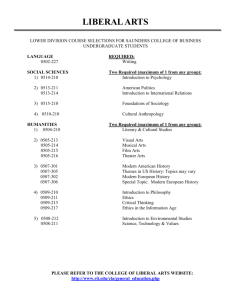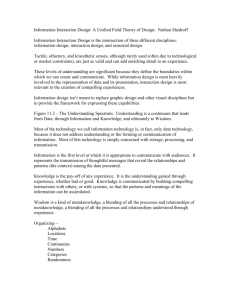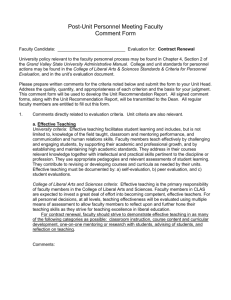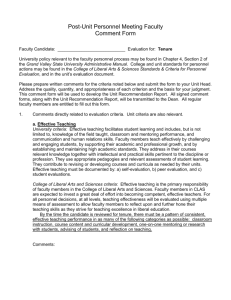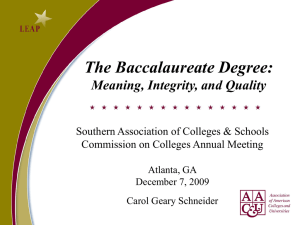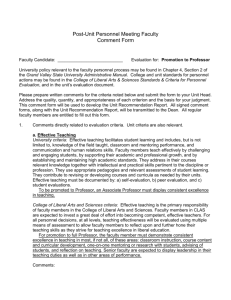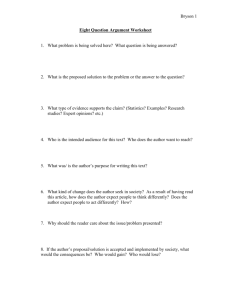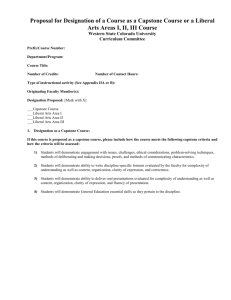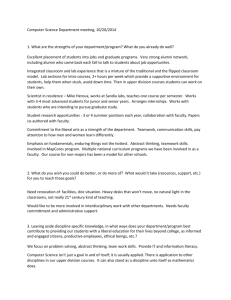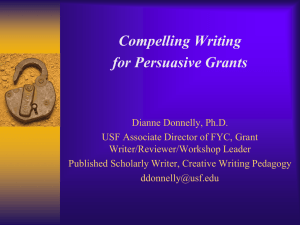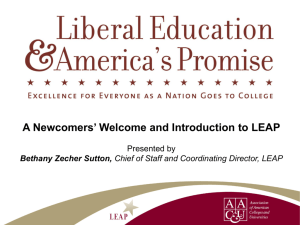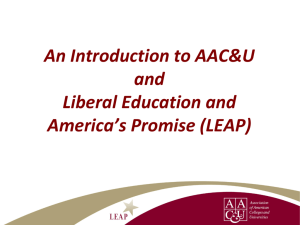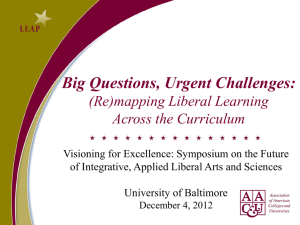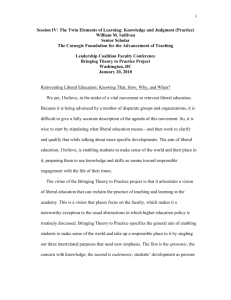A Compass for Turbulent Times
advertisement
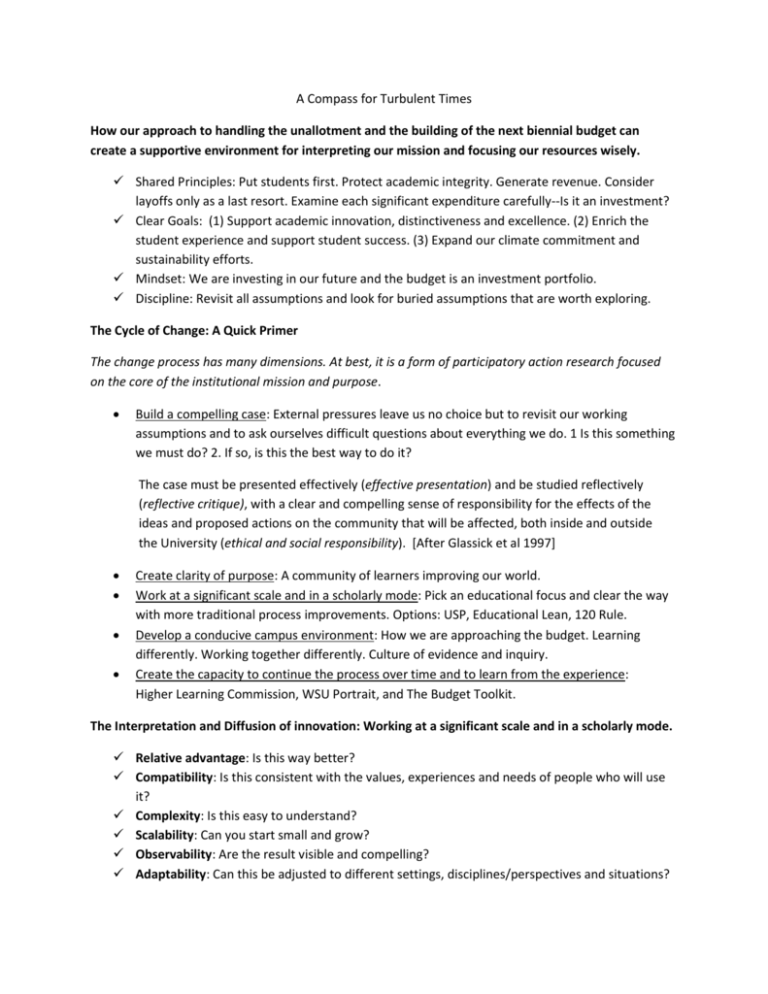
A Compass for Turbulent Times How our approach to handling the unallotment and the building of the next biennial budget can create a supportive environment for interpreting our mission and focusing our resources wisely. Shared Principles: Put students first. Protect academic integrity. Generate revenue. Consider layoffs only as a last resort. Examine each significant expenditure carefully--Is it an investment? Clear Goals: (1) Support academic innovation, distinctiveness and excellence. (2) Enrich the student experience and support student success. (3) Expand our climate commitment and sustainability efforts. Mindset: We are investing in our future and the budget is an investment portfolio. Discipline: Revisit all assumptions and look for buried assumptions that are worth exploring. The Cycle of Change: A Quick Primer The change process has many dimensions. At best, it is a form of participatory action research focused on the core of the institutional mission and purpose. Build a compelling case: External pressures leave us no choice but to revisit our working assumptions and to ask ourselves difficult questions about everything we do. 1 Is this something we must do? 2. If so, is this the best way to do it? The case must be presented effectively (effective presentation) and be studied reflectively (reflective critique), with a clear and compelling sense of responsibility for the effects of the ideas and proposed actions on the community that will be affected, both inside and outside the University (ethical and social responsibility). [After Glassick et al 1997] Create clarity of purpose: A community of learners improving our world. Work at a significant scale and in a scholarly mode: Pick an educational focus and clear the way with more traditional process improvements. Options: USP, Educational Lean, 120 Rule. Develop a conducive campus environment: How we are approaching the budget. Learning differently. Working together differently. Culture of evidence and inquiry. Create the capacity to continue the process over time and to learn from the experience: Higher Learning Commission, WSU Portrait, and The Budget Toolkit. The Interpretation and Diffusion of innovation: Working at a significant scale and in a scholarly mode. Relative advantage: Is this way better? Compatibility: Is this consistent with the values, experiences and needs of people who will use it? Complexity: Is this easy to understand? Scalability: Can you start small and grow? Observability: Are the result visible and compelling? Adaptability: Can this be adjusted to different settings, disciplines/perspectives and situations? Use a coherent educational philosophy as a compass: Liberal Education and America’s Promise (LEAP) The Essential Learning Outcomes were derived from a study of the requirements set by regional accrediting bodies, specialized professional associations such as ABET, AACSB, Nursing, Education, qualities of an educated person defined by the partnership for 21st Century Skills, etc. Liberal Education is a concept different from the term liberal arts and sciences which refers to particular disciplines. The Essential Learning Outcomes apply to all fields of study but would be expressed differently and fostered in distinctive and discipline/profession-specific ways. Basic Assumptions (adapted from Brown Task Force on Undergraduate Education Report, September 2008) •A curriculum should be more about context than content and the basic conditions that foster learning rather than the subjects learned. •The most important social, political, scientific and moral challenges of any era have always demanded the ability to navigate multiple points of view and the application of the tools of many disciplines. •The curriculum has always reflected the changing landscape of American culture and the challenges of nation-building but often lags behind. The elements of LEAP (Principles of Excellence and Essential Learning Outcomes) capture today’s ideas about the practical value of a liberal education. To accomplish those goals, institutions must connect to their communities through the experiences of students, the design of the curriculum, the focus and intentions of scholarship and mutually beneficial institutional relationships. (For quick summary, see the packet of material entitled Give Students a Compass.) Things to keep in mind as you lead in challenging times. Understand our institutional history and the lessons it offers about how our University has responded to external threats or change initiatives in the past. Avoid decision traps. Take time to frame the questions, assess your situation, use the tools of scholarship and learn from your experiences. Remember that you are part of a community of learners. Approach your task as a scholarly act. Be clear about your educational philosophy and goals and link your response to that agenda. Do not approach change as an administrative act or as a budget cutting exercise. Take time to learn about the process of change itself. Hold yourself to high standards of proof and conduct. Apply Glassick et al to your own work. Listen to how people talk about what is happening and be ready to respond to rumors and confusion. Be open, be clear, and communicate frequently. Remember that people will most likely fill in gaps in what they know with whatever they remember from some other similar time or with what they are most afraid might happen. Prepared by Judith Ramaley, February 1, 2009
